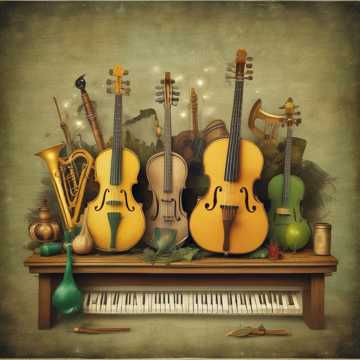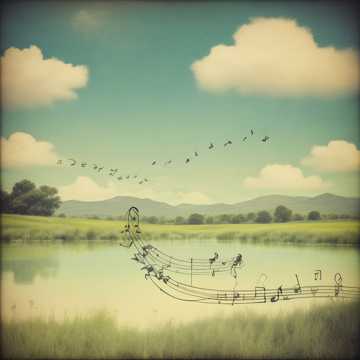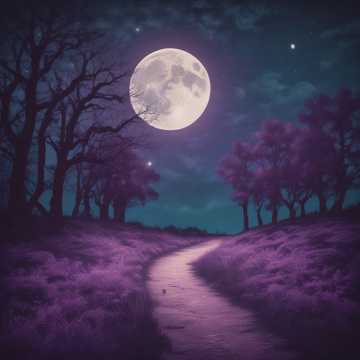
Free Hungarian folk Music Generator Powered by AI
Turn text into high-quality Hungarian folk music effortlessly – no login required!
music.toolTips

Mulatósra kopog a csizma
Egy vidám, népi ihletésű mulatós dal, ahol a csizma kopogása, a hegedű hangja és a poharak csengése ünnepli az élet örömeit, a közösséget és a táncot.
01:54
12 hours ago

Tiszta öröm a pohárba
A 'Tiszta öröm a pohárba' egy magyar népi hangulatú dal az élet, a bor és a pillanat öröméről, ahol minden korty a természet és a remény ünnepe.
03:10
20 hours ago

Mintha Mise Történt Volna
Egy halk, mégis élettel teli dal a nyugalomról és lelki megtisztulásról, ahol a mindennapi pillanat misztikus áhítattá változik – mintha mise történt volna.
01:54
1 days ago

Éjjelig Pálikával
Az 'Éjjelig Pálikával' egy érzelmes, népi ihletésű ballada az éjszakáról, elmúlásról és önkeresésről, amely a múlt elengedésének csendes szabadságát ünnepli.
02:36
2 days ago
Sub-tags and Classifications of Hungarian Folk Music
Traditional Hungarian Folk
Traditional Hungarian folk music refers to the older, regional styles that were passed down through generations via oral tradition. This category includes music from various parts of Hungary, such as Transylvania, the Great Plain (Alföld), and the Hungarian Highlands. The melodies are often characterized by their use of pentatonic scales, irregular rhythms, and emotional depth. These songs typically deal with themes of loveHungarian folk music content, nature, work, and the struggles of everyday life.
Csárdás
The Csárdás is a distinctive Hungarian folk dance and its accompanying music. It is one of the most iconic forms of Hungarian folk music, consisting of two main sections: a slow, emotional introduction (lassú) followed by a fast, energetic finale (friss). The music is often played in 2/4 or 4/4 time and features a dynamic rhythm that reflects the passionate and lively nature of the dance.
Hungarian Gypsy Music
Hungarian Gypsy music, often performed by Romani musicians, is a subgenre that blends traditional Hungarian folk with influences from Romani musical traditions. Known for its virtuosic violin and cimbalom performances, this music is characterized by its emotional intensity and dramatic phrasing. It has played a key role in the evolution of Hungarian folk music, contributing to both its melodic and rhythmic diversity.
Transylvanian Folk
Transylvanian folk music represents the unique blend of Hungarian, Romanian, and Saxon influences found in the region of Transylvania. This subgenre is rich in both vocal and instrumental traditions, often featuring complex harmonies, unusual scales, and a variety of folk instruments, including bagpipes, fiddles, and the cimbalom. The music is both melancholic and celebratory, with a strong emphasis on storytelling.
Famous Artists and Iconic Works of Hungarian Folk Music
Zoltán Kodály
Zoltán Kodály was a Hungarian composer, ethnomusicologist, and educator, who significantly influenced the preservation and development of Hungarian folk music. His major contributions include collecting and transcribing traditional Hungarian songs, which he integrated into his compositions. Kodály's pedagogical approach to music education, known as the Kodály Method, also emphasizes the importance of Hungarian folk music as a tool for music education. Some of his notable works include 'Psalmus Hungaricus' and 'Dances of Galánta.'
Czárdás by Vittorio Monti
Although originally an Italian composition, the 'Czárdás' has become a staple of Hungarian folk music, particularly in its role as a dance tune. Its fast-paced, energetic rhythms capture the lively spirit of Hungarian folk traditions, with its alternating slow and fast sections reflecting the dramatic shifts typical of the Csárdás dance. The piece showcases the energetic flair and dynamic contrasts that are central to Hungarian folk music.
Béla Bartók
Béla Bartók is one of the most renowned figures in Hungarian folk music, known for his groundbreaking work in collecting and analyzing traditional music. His fieldwork, particularly in Transylvania, allowed him to document and preserve the melodies of Hungarian peasants. Bartók's compositions, such as 'Concerto for Orchestra' and 'Six String Quartets,' incorporate elements of Hungarian folk music, often using irregular rhythms and folk melodies.
Romanian Dances by Béla Bartók
'Romanian Dances' by Béla Bartók is a set of six short pieces that blend elements of Hungarian, Romanian, and Transylvanian folk music. The work is known for its use of irregular time signatures, modal scales, and intricate rhythms, making it a key example of Bartók's ability to integrate folk elements into classical composition. The pieces evoke the rural dance traditions of Central Europe and serve as an important preservation of folk culture.
Ferenc Liszt
Ferenc Liszt, though better known for his classical compositions, also drew inspiration from Hungarian folk music. His works, such as the 'Hungarian Rhapsodies,' showcase the vibrant rhythms and melodies of Hungarian folk music, infusing them with his virtuosic piano technique. His contributions helped elevate Hungarian folk traditions to international recognition.
Applications of Hungarian Folk Music in Modern Media
Hungarian folk music is often used in film soundtracks to evoke themes of tradition, heritage, and emotional depth. Films such as 'The Grand Budapest Hotel' by Wes Anderson and 'The White King' feature Hungarian folk music to emphasize the cultural setting and emotional tone of the narrative. The energetic rhythms and evocative melodies of Hungarian folk create a powerful atmosphere, enhancing the visual storytelling.
Movie Soundtracks
Hungarian folk music is also employed in advertising to evoke a sense of authenticity, nostalgia, and cultural pride. Brands looking to connect with audiences on a deeper emotional level often incorporate folk melodies to evoke a connection to Hungarian roots, such as in commercials promoting traditional products or regional tourism.
Advertising Music
In video games, Hungarian folk music is sometimes used to enhance the narrative and immersive experience. Games set in Central or Eastern Europe, like 'The Witcher' series, frequently incorporate folk music elements to reflect the setting's cultural backdrop, using folk melodies and instruments like the violin, cimbalom, and flute to deepen the immersion into the world of the game.
Video Game Soundtracks